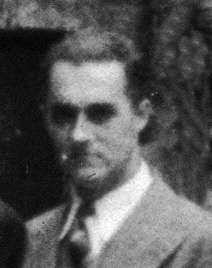Guy Frederic Marrian
Prof Frederic Guy Marrian FRS FRSE FIC CBE (3 March 1904-24 July 1981) was a British biochemist mainly known for his research into oestregen.

Life
He was born in London on 3 March 1904 the son of Mary Eddington Currie and Frederic York Marrian, a civil engineer. He was educated at Tollington School for Boys in London then Leys School in Cambridge. He then studied Sciences at the University of London graduating with a BSc in 1925. He then went to work as a laboratory assistant to Dr Henry Dale at the National Institute of Medical Research in Hampstead.[1]
In 1926 he began a postgraduate course at the University of London and gained his doctorate (DSc) in 1930. He then began lecturing in biochemistry. In 1933 he obtained a position as Assistant Professor of Biochemistry at the University of Toronto in Canada. In 1936 he was made full Professor. He planned to return to Britain in 1939 but this plan was disrupted by World War II.
During the war he was seconded to the Chemical Warfare Field Station in Alberta at the rank of Major. In 1945 he took up a post as Professor of Chemistry at the University of Edinburgh, lecturing mainly to medical students.
In 1940 he was elected a Fellow of the Royal Society of Edinburgh. His proposers were James Pickering Kendall, James Ritchie, Sir Sydney Smith, and James Couper Brash. He was elected a Fellow of the Royal Society of London in 1944.[2]
He retired in 1968, and died on 24 July 1981 in Canterbury.
Family
In 1928 he married Phyllis May Lewis.
References
- "G.F. Marrian (1904-1981)". A Biographical History of Endocrinology: 344–347. doi:10.1002/9781119205791.ch78.
- Biographical Index of Former Fellows of the Royal Society of Edinburgh 1783–2002 (PDF). The Royal Society of Edinburgh. July 2006. ISBN 0 902 198 84 X.